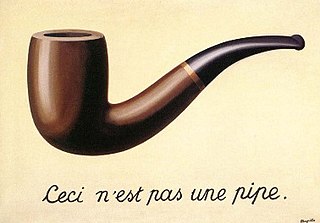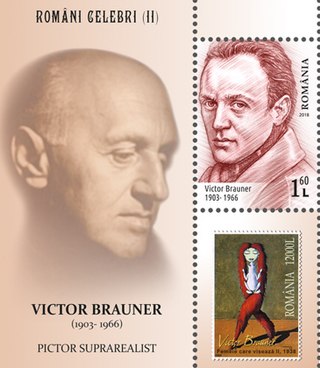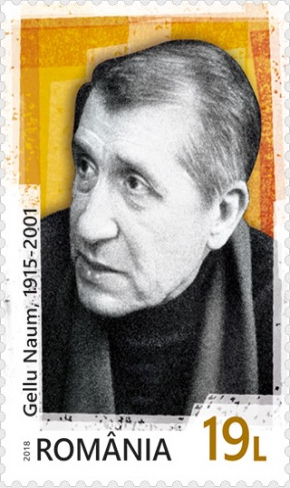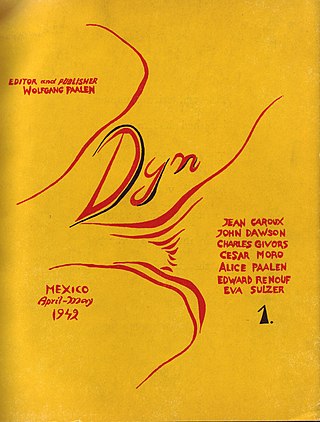
Surrealism is a cultural movement that developed in Europe in the aftermath of World War I in which artists depicted unnerving, illogical scenes and developed techniques to allow the unconscious mind to express itself. Its aim was, according to leader André Breton, to "resolve the previously contradictory conditions of dream and reality into an absolute reality, a super-reality", or surreality. It produced works of painting, writing, theatre, filmmaking, photography, and other media.

Surrealist automatism is a method of art-making in which the artist suppresses conscious control over the making process, allowing the unconscious mind to have great sway. Early 20th-century Dadaists, such as Hans Arp, made some use of this method through chance operations. Surrealist artists, most notably André Masson, adapted to art the automatic writing method of André Breton and Philippe Soupault who composed with it Les Champs Magnétiques in 1919. The Automatic Message (1933) was one of Breton's significant theoretical works about automatism.
Surrealism in art, poetry, and literature uses numerous techniques and games to provide inspiration. Many of these are said to free imagination by producing a creative process free of conscious control. The importance of the unconscious as a source of inspiration is central to the nature of surrealism.
Gherasim Luca was a Romanian surrealist theorist and poet. Born Salman Locker in Romania and also known as Costea Sar, and Petre Malcoci, he became an apatrid after leaving Romania in 1952.
Dolfi or Dolphi Trost was a Romanian surrealist poet, artist, and theorist, and the instigator of entopic graphomania. Together with Gherasim Luca, he was the author of Dialectique de la dialectique (1945). He also authored a work entitled Le même du même.

Joyce Mansour nee Joyce Patricia Adès,, was an Egyptian-French author, notable as a surrealist poet. She became the best known surrealist female poet, author of 16 books of poetry, as well as a number of important prose and theatre pieces.

Wolfgang Robert Paalen was an Austrian-Mexican painter, sculptor, and art philosopher. A member of the Abstraction-Création group from 1934 to 1935, he joined the influential Surrealist movement in 1935 and was one of its prominent exponents until 1942. Whilst in exile in Mexico, he founded his own counter-surrealist art-magazine DYN, in which he summarized his critical attitude towards radical subjectivism and Freudo-Marxism in Surrealism with his philosophy of contingency. He rejoined the group between 1951 and 1954, during his sojourn in Paris.

Victor Brauner was a Romanian painter and sculptor of the surrealist movement.

Claude Cahun was a French surrealist photographer, sculptor, and writer.
Vision dans le cristal. Oniromancie obsessionelle. Et neuf graphomanies entoptiques. is a 1945 book by Romanian Dolfi Trost. The book forms part of his surrealist art theory, specifically on the area of entopic graphomania, a surrealist technique invented by the author. As the title suggests, it contains the first nine examples of the technique. This method of "indecipherable writing" was supposedly an example of "surautomatism", the controversial theory put forward by Trost and Gherashim Luca in which surrealist methods would be practiced that "went beyond" automatism.
Dialectique de la dialectique is a 1945 text publication by Romanian surrealists Gherasim Luca and Dolfi Trost. Its subtitle was Message to the International Surrealist Movement. Like the artists previous work it was largely based on surrealist theory and the sustainance of the surrealist movement.
Surreal humour is a form of humour predicated on deliberate violations of causal reasoning, thus producing events and behaviours that are obviously illogical. Portrayals of surreal humour tend to involve bizarre juxtapositions, incongruity, non-sequiturs, irrational or absurd situations, and expressions of nonsense.

Óscar M. Domínguez was a Spanish surrealist painter.

René Crevel was a French writer involved with the surrealist movement.

Minotaure was a Surrealist-oriented magazine founded by Albert Skira and E. Tériade in Paris and published between 1933 and 1939. Minotaure published on the plastic arts, poetry, and literature, avant garde, as well as articles on esoteric and unusual aspects of literary and art history. Also included were psychoanalytical studies and artistic aspects of anthropology and ethnography. It was a lavish and extravagant magazine by the standards of the 1930s, profusely illustrated with high quality reproductions of art, often in color.
Pierre Naville was a French Surrealist writer and sociologist. He was a prominent member of the "Investigating Sex" group of Surrealist thinkers.

Gellu Naum was a Romanian poet, dramatist, novelist, children's writer, and translator. He is remembered as the founder of the Romanian Surrealist group. The artist Lygia Naum, his wife, was the inspiration and main character in his 1985 novel Zenobia.

DYN was an art magazine founded by the Austrian-Mexican Surrealist Wolfgang Paalen, published in Mexico City, and distributed in New York City, Paris, and London between 1942 and 1944. Only six issues were produced.
Paul Păun, born Zaharia Herșcovici and who later in life changed his legal name to Zaharia Zaharia, also signed his work Paul Paon and Paul Paon Zaharia. He was a Romanian and Israeli avant-garde poet and visual artist, who wrote in Romanian and French and produced surrealist and abstract drawings. He was also a medical doctor and surgeon. His work is registered with the ADAGP and the SGDL.

Judit Reigl was a Hungarian painter who lived in France.











